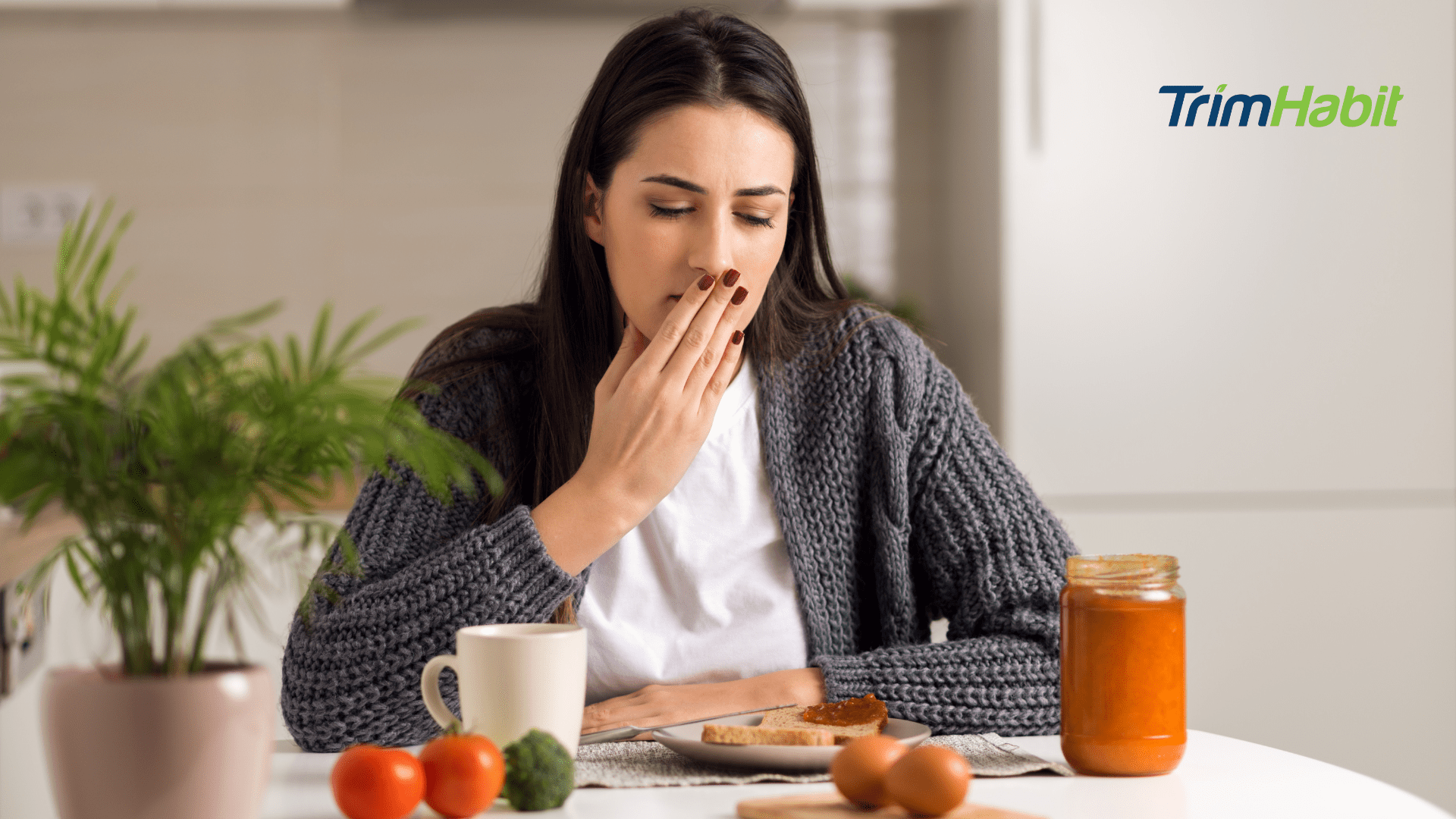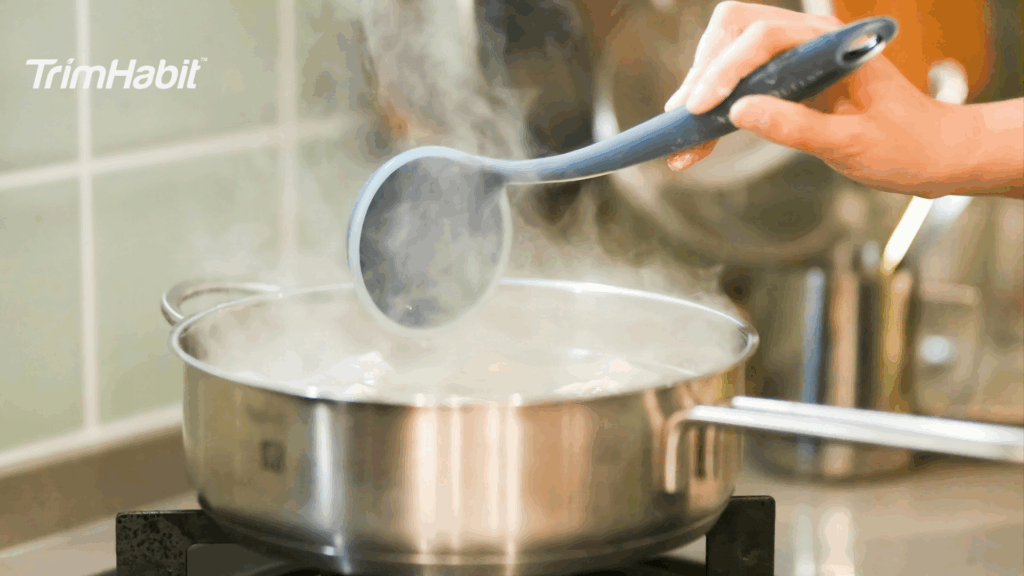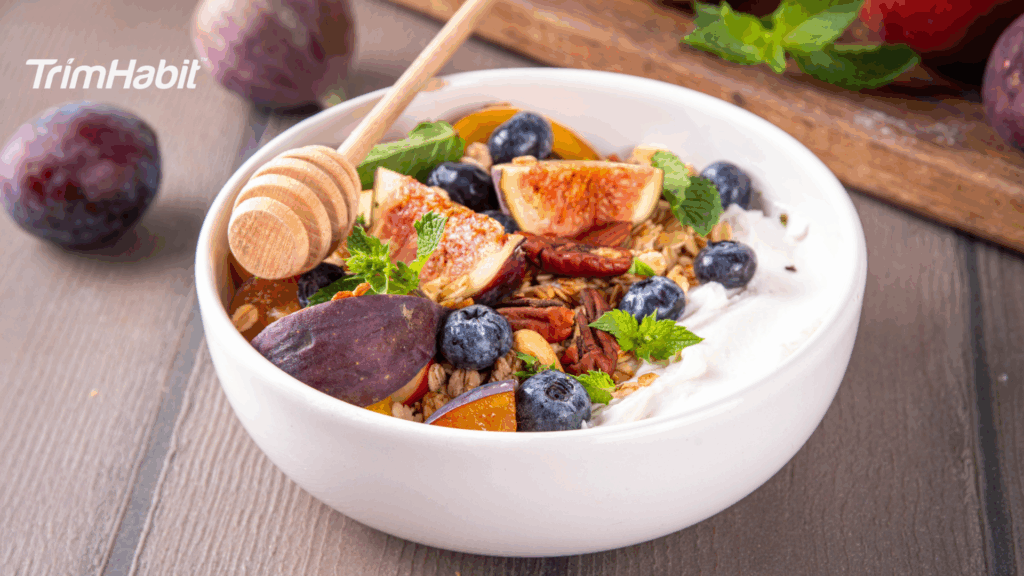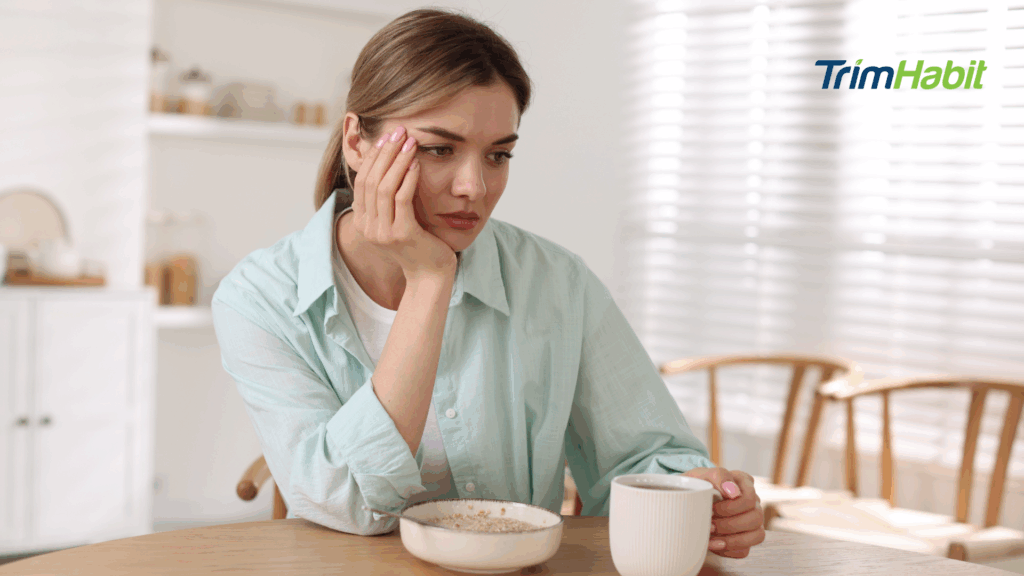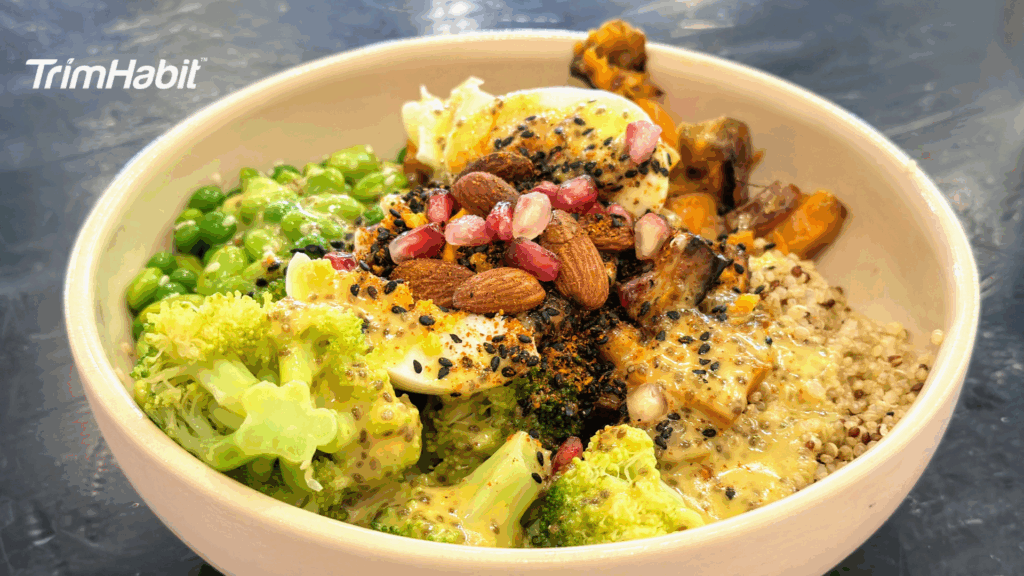If you’re taking semaglutide, such as Ozempic or Wegovy, and you’ve begun to feel sick, you’re not alone. Nausea is one of the most commonly reported gastrointestinal side effects of these anti-obesity medications. While semaglutide slows gastric emptying to help with weight loss, that same effect can interfere with how your digestive system handles food.
Choosing anti-nausea foods for semaglutide side effects can make a big difference in how you feel each day. You don’t have to suffer through every meal. Paying attention to what you eat, how much you eat, how fast you eat, and when you eat can ease nausea, stomach pain, bloating, and acid reflux.
You can reduce symptoms, support weight management, and avoid giving up on the treatment too early. This guide covers which foods to eat, which ones to avoid, and how to structure your meals in a way that works with your medication instead of against it.
Why You Feel Sick On Semaglutide
The active ingredient in Ozempic is semaglutide. It mimics a hormone called GLP-1, which affects appetite, insulin levels, and digestion1. One of the biggest effects is delayed gastric emptying. That means food stays in your stomach longer than it normally would. This helps you feel full sooner and for a longer time, which supports losing weight. But it also means that your food is in the stomach and moves through the digestive system more slowly than your body is used to.
Because semaglutide slows food movement through your digestive tract, you may feel bloated or nauseous after meals. Large portions or rich foods can sit heavy in your stomach, leading to reflux, gas, or even vomiting. Certain foods make this worse, especially if they are high in fat, sugar, or spice.
Eat Smaller Meals To Avoid Nausea
Rather than eating three large meals each day, try eating smaller meals more frequently. This gives your stomach a better chance to handle food without becoming overwhelmed. When food stays in your stomach longer, large portions create too much pressure, which leads to discomfort and can make you feel sick.
Try eating five or six smaller meals spaced about every two to three hours. These frequent meals support smoother digestion and help regulate blood sugar. You’ll also find it easier to manage hunger while staying within the calorie limits of your weight loss plan.
Eat Slowly And Chew Well
You might feel tempted to rush through a meal, especially if you’re in a hurry. But eating too fast is one of the worst things you can do when you’re trying to avoid GI distress. Eat slowly and chew your food thoroughly. Give your stomach time to respond to the food before adding more. This practice supports better digestion and can significantly reduce nausea.
When you eat too fast, you send large amounts of unprocessed food to your stomach. That can overwhelm your digestive system, especially when semaglutide has slowed down stomach emptying. Taking your time helps your body break down each bite and reduces the chance of bloating or acid reflux.
Best Foods To Eat When You Feel Sick
Certain foods are easier on your stomach and better for your digestive system while taking semaglutide. These foods are simple, low in fat, low in sugar, and rich in nutrients that support digestive health.
1. Bland Low Fat Foods
When your stomach feels sensitive, bland, low-fat foods like plain toast, oatmeal, bananas, rice, or applesauce can calm your system. These items are easy to digest and unlikely to cause acid reflux or bloating. Avoid adding butter, cream, or heavy sauces. These additions can make your nausea worse.
2. Lean Protein
Protein helps preserve muscle during weight loss, but high-fat protein sources are not ideal. Stick to lean protein options such as grilled chicken breast, turkey, tofu, egg whites, or white fish. Bake or steam these foods without oil. This reduces fat content and makes them gentler on your stomach.
3. Starchy Vegetables
Sweet potatoes, carrots, squash, pumpkin, and parsnips are excellent starchy vegetables to include in your meal plan. They are soft, naturally sweet, and rich in fiber. These vegetables provide long-lasting energy and support your digestive system without triggering nausea.
4. Whole Grains
Whole grains like brown rice, quinoa, and barley contain dietary fiber that aids digestion. Unlike refined grains, they release energy slowly and help keep your blood sugar stable. You can eat foods like oatmeal or whole-grain toast to support both your digestion and your weight management goals.
5. Low Glycemic Foods
Low glycemic foods help regulate your blood sugar, making them ideal for people taking semaglutide. These foods include lentils, beans, non-starchy vegetables, and certain fruits. They digest slowly and give your body steady energy without adding stress to your stomach.
6. Fruits and Vegetables
Fruits and vegetables are essential to any balanced diet. When you’re experiencing GI symptoms, choose cooked or peeled versions. Applesauce, canned peaches (in water), steamed spinach, or boiled zucchini can offer nutrients without overwhelming your digestive system.
Foods That Make Nausea Worse
Some foods can trigger or worsen gastrointestinal side effects when you’re on semaglutide. These foods often interfere with digestion, create extra gas, or slow down gastric emptying even more than the medication already does.
1. High Fat Foods
Avoid foods that are high in saturated fats, such as bacon, sausage, cream-based sauces, and heavy cheeses. These foods are hard to digest and will sit in your stomach longer, making nausea more likely. A single high-fat meal may worsen your symptoms for hours.
2. Fried Foods
Fried foods like French fries, fried chicken, onion rings, and battered items are a major cause of nausea and reflux. The oil and breading make these foods difficult for your stomach to process. Stick with baked, grilled, or steamed options to prevent GI distress.
3. Spicy Foods
While flavorful, spicy foods can irritate your stomach lining. Hot sauce, chili, curry, and peppers can increase acid and cause stomach pain. When you’re dealing with GI symptoms from semaglutide, it’s best to keep your meals mild and skip the heat.
4. Sugary Foods
Foods with added sugar, such as candy, pastries, and soda, can spike your blood sugar and worsen nausea. These sweet foods often provide little nutrition and make digestion harder. Even fruit juices can cause problems if they contain too much added sugar.
5. Sweet Foods and Processed Food
Limit highly processed food items that contain artificial ingredients, preservatives, and sweeteners. Many processed snacks are loaded with sugar and unhealthy fats, which can increase stomach discomfort. Instead, choose whole foods that nourish your body and support digestion.
Stay Hydrated To Avoid Dehydration
Even mild nausea can reduce your desire to drink fluids, but avoiding dehydration is essential. Vomiting, diarrhea, and reduced appetite can all cause fluid loss, especially in the first few weeks of taking semaglutide.
Drink small amounts of water throughout the day. Sip slowly and avoid chugging. Cold fluids may be easier to tolerate than warm ones. You can also try electrolyte drinks without added sugar, herbal teas, or clear broths to help maintain hydration.
If you can’t keep fluids down for more than 24 hours, or if you experience signs of dehydration such as dizziness or dry mouth, seek medical advice from your healthcare provider.
Tips On Creating A Meal Plan
Designing a meal plan while taking weight loss drugs like Ozempic doesn’t have to be complicated. You can reduce adverse effects by making a few smart changes to your daily eating habits.
- Stick with simple meals based on whole grains, lean protein, and cooked vegetables.
- Eat smaller meals more frequently instead of large meals.
- Prepare foods in gentle ways such as boiling, steaming, or baking.
- Test new foods one at a time to see how your body responds.
- Avoid combining too many new ingredients at once.
Keeping a food log helps you track what works and what doesn’t. Over time, you’ll learn which items support your digestive system and which ones trigger discomfort. You can then adjust your meal plan based on real results.
Learn To Stop Eating When Full
Because semaglutide increases your sense of fullness, you’ll need to be more mindful about when to stop eating. This can be difficult if you’re used to finishing your plate or eating quickly.
Pay close attention to early signs of fullness. Stop eating as soon as you feel satisfied. Don’t push yourself to finish a meal. Doing so can lead to stomach pain, reflux, or nausea. Eating should support your weight management and digestive comfort, not work against it.
Lifestyle Tips For Digestive Comfort
Your eating habits are only part of the solution. A few lifestyle habits can also help you minimize side effects and support better digestion.
- Sit upright during and after meals for at least 30 minutes.
- Avoid lying down right after eating.
- Go for a light walk after meals to help with food movement.
- Avoid wearing tight clothing around your waist.
- Limit caffeine and carbonated drinks, which can increase bloating.
These habits work together with a healthy diet to reduce symptoms and support better health outcomes.
When To Seek Medical Advice
Although nausea is common with semaglutide, it should not interfere with your ability to eat, drink, or function. If symptoms become severe, last longer than a few weeks, or include vomiting, dehydration, or intense abdominal pain, seek medical advice immediately.
Your healthcare provider may adjust your dosage, recommend anti-nausea medication, or refer you to a specialist. The goal is to help you stay on treatment safely and comfortably.
Conclusion: Anti-Nausea Foods For Semaglutide Side Effects
Figuring out what to eat while dealing with semaglutide side effects isn’t about following a strict set of rules. It’s really about tuning in to how your body reacts to different foods while you’re on a medication that slows digestion. Some foods will sit well and help you feel better. Others might make your symptoms worse. Over time, you’ll start to notice what works for you and what doesn’t.
Stick with simple, bland, low-fat foods when your stomach feels off. Eat slowly, and keep your portions small. Skip fried, spicy, and sugary foods as much as you can. Sip water throughout the day to avoid dehydration. Most importantly, listen to your body. These small changes can make a big difference in how you feel from day to day.
And if the nausea doesn’t let up or something doesn’t feel right, don’t push through it on your own. Reach out to your healthcare provider. They can help you make adjustments and get you feeling more comfortable as your body adjusts.

